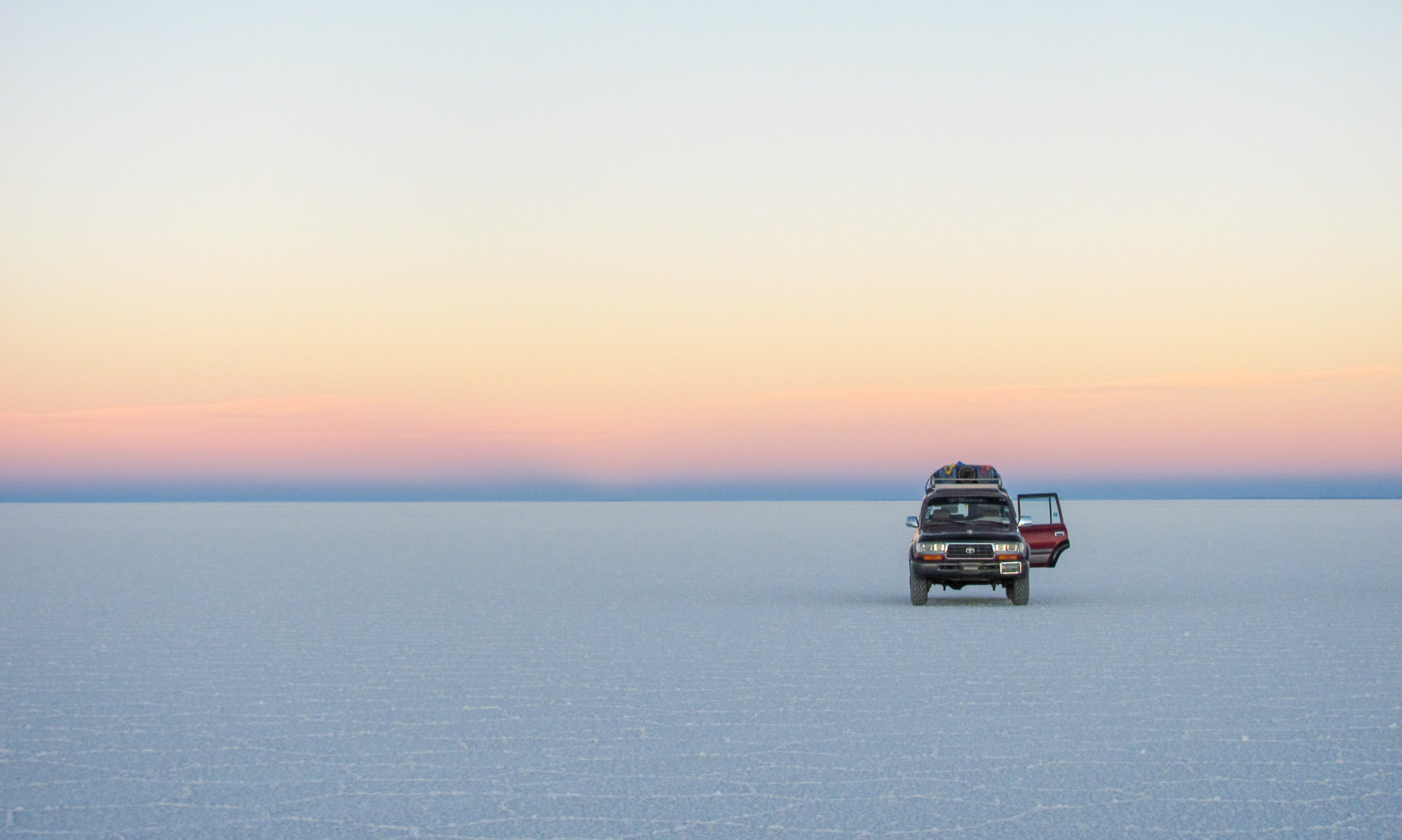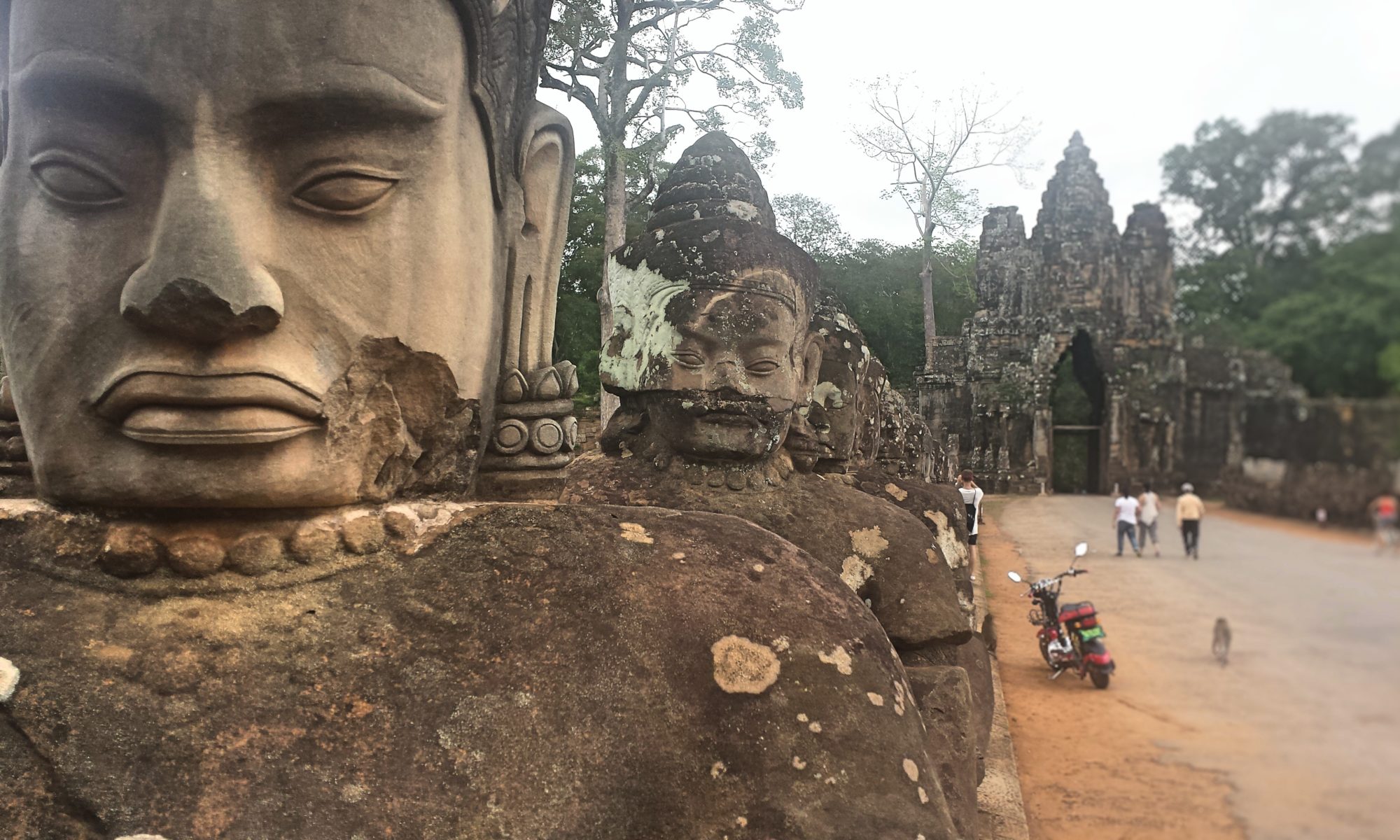The great temples of Angkor need no introduction. Every traveler that plans on visiting Cambodia has both heard of and intends to visit them. Next to its infamous main temple Angkor Wat, the Bayon temple (temple of the heads) and the ‘tomb-raider temple’ Ta Prohm attract a daily massive crowd. Nevertheless few doubt their beauty when they are standing face-to-face with them, crowds or not. As a Dutchy I am obviously biased towards cycling, since we’re basically born on one. But with this read I am not merely going to explain how to visit the temples by bicycle. I am also going to convince you that cycling Angkor Wat is really the only way to go at it.
– All options to exploring Angkor Wat –
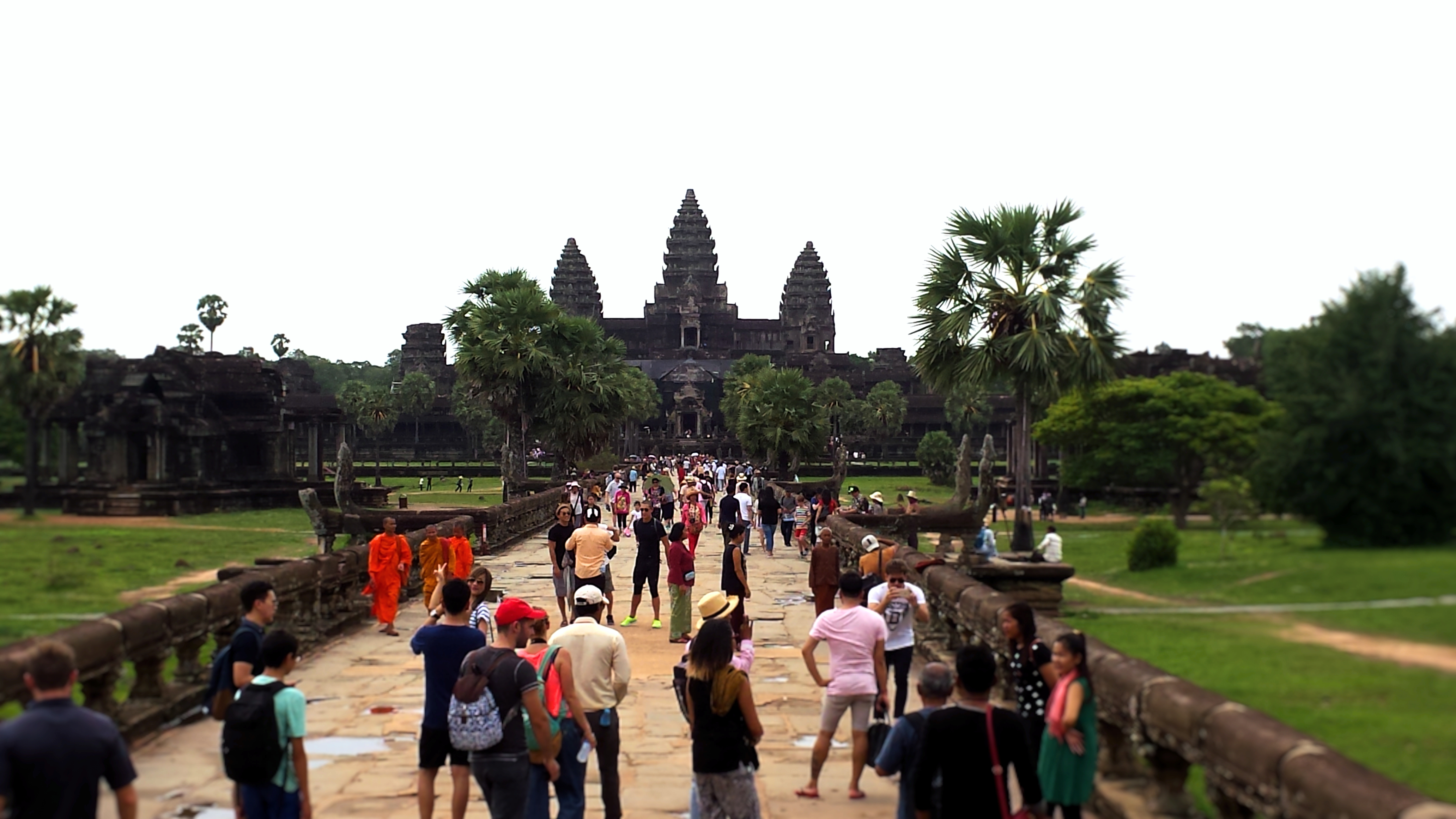
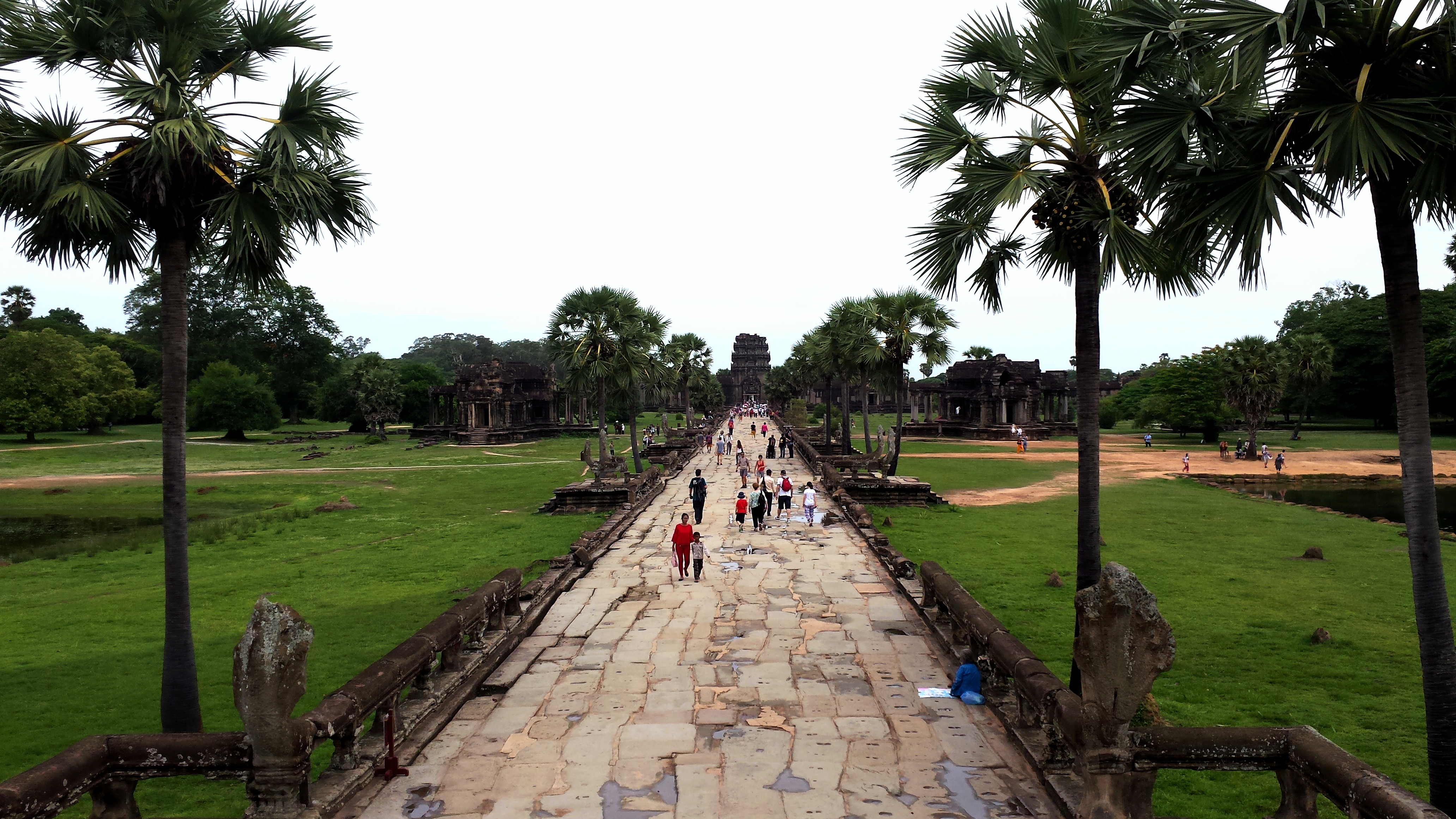
So what are your options? Due to Angkor’s massive pull to tourism, there are plenty. You can book a guided tour with a group ‘temple-hopping’ by bus or opt for a private guided tour. Private tours can be tours by bus, minivan, car, remork-moto (the Cambodian play on the Thai ‘tuk tuk’), moto (scooter bike) and yes probably also by bicycle. Though I have not seen those tours around.
There is even an option to go over the area with an hot-air balloon (Nov-March), which sounds awesome but is probably not the most fitted way to actually see the temples up close as your route heavily depends on the directions the wind is blowing from. Also around most of the temples there is no place to land, making it impossible to actually drift over them. Next to that you can take all the above ways of transportation and add a helicopter ride but venture out on your own.
– Why all these options are worse than cycling Angkor Wat –
So if there are so many options, why am I so dead set on cycling Angkor Wat? First of all lets eliminate some of the options. A bus-tour can be convenient if you are short on time but will guarantee a lot of waiting, crowded visits and you will only see the main temples. Explanations by the guide will not convene anything a written guide can’t also tell and you will miss out on half of it due to the size of your group and the murmur of its people.
Going by car or remork-moto, with or without a guide, is a poor choice of transport. It will bring you to your desired places, but on your way towards them you will not see anything more than your window frame allows. Or than what you can see from underneath the canvas-roof of your remork. More importantly, you will miss out on all the temples you did not intend to visit but just happen to stumble upon. Angkor is a huge area, and a lot of great temples and sights are not even mapped and rarely visited.
Going by your own moto can be rewarding however the loud roar of the engine and sweaty helmet can be quite the bug. You can go without them if… indeed, if you go by bicycle.
– The perks of cycling Angkor Wat –
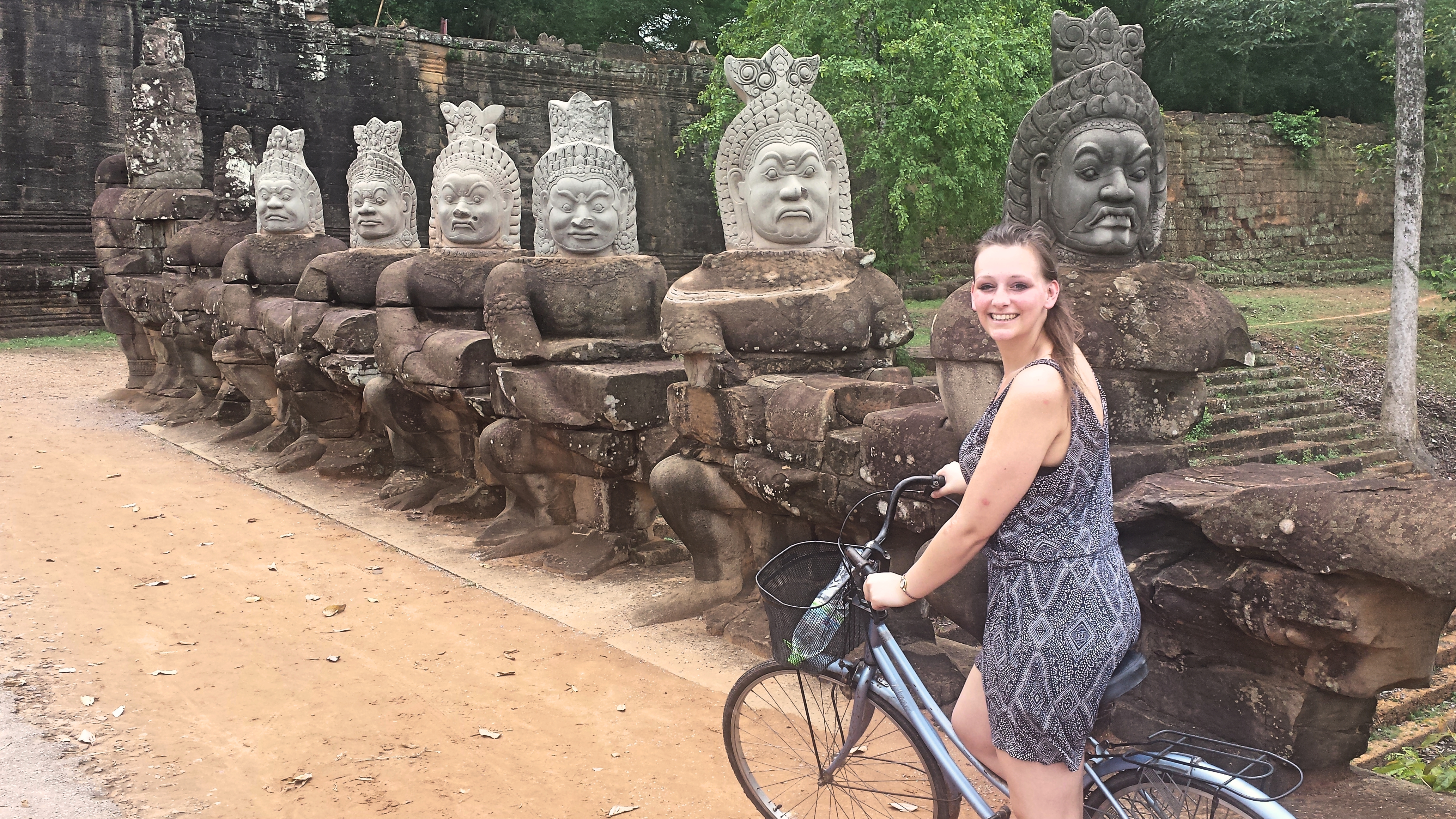
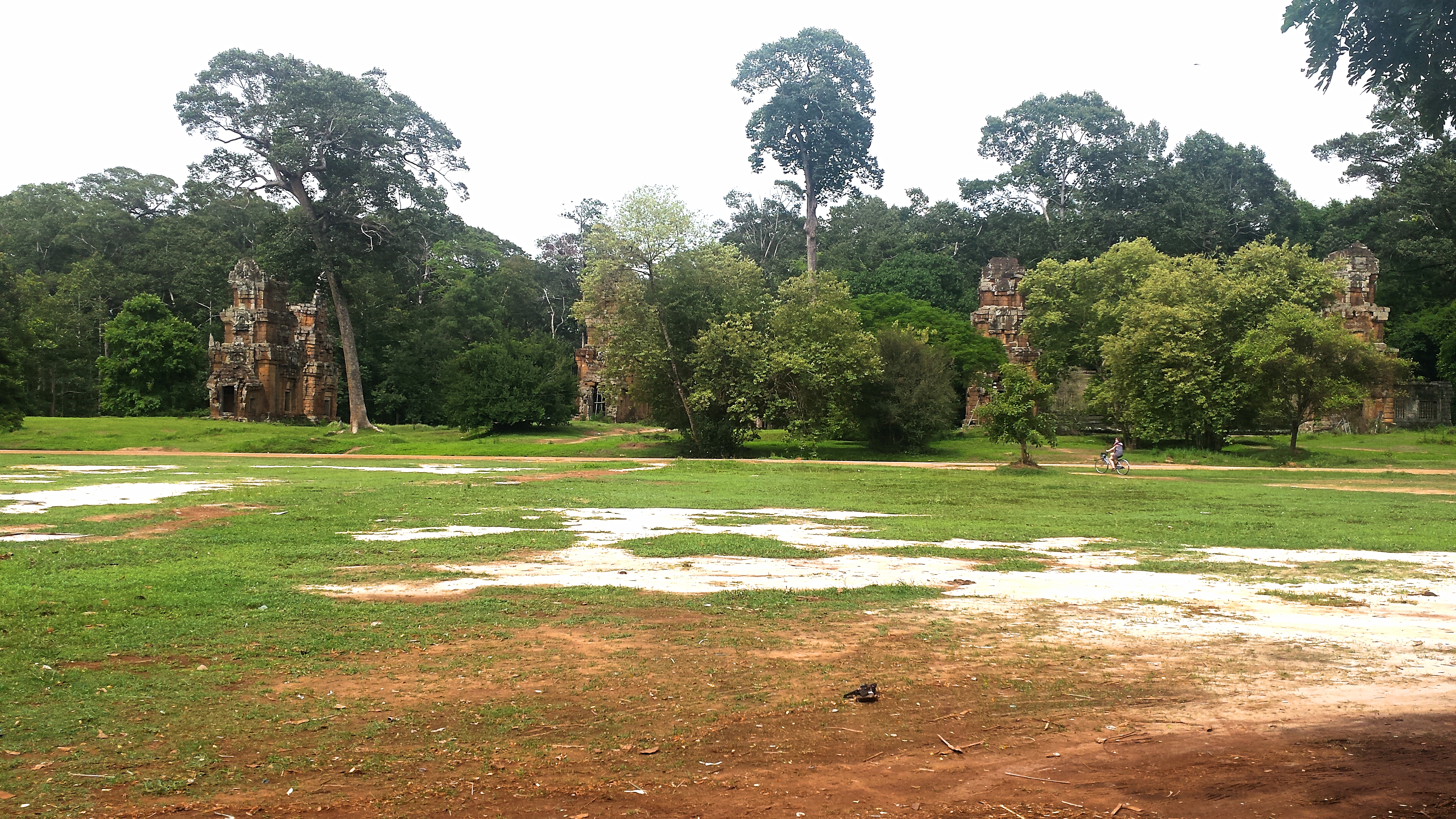
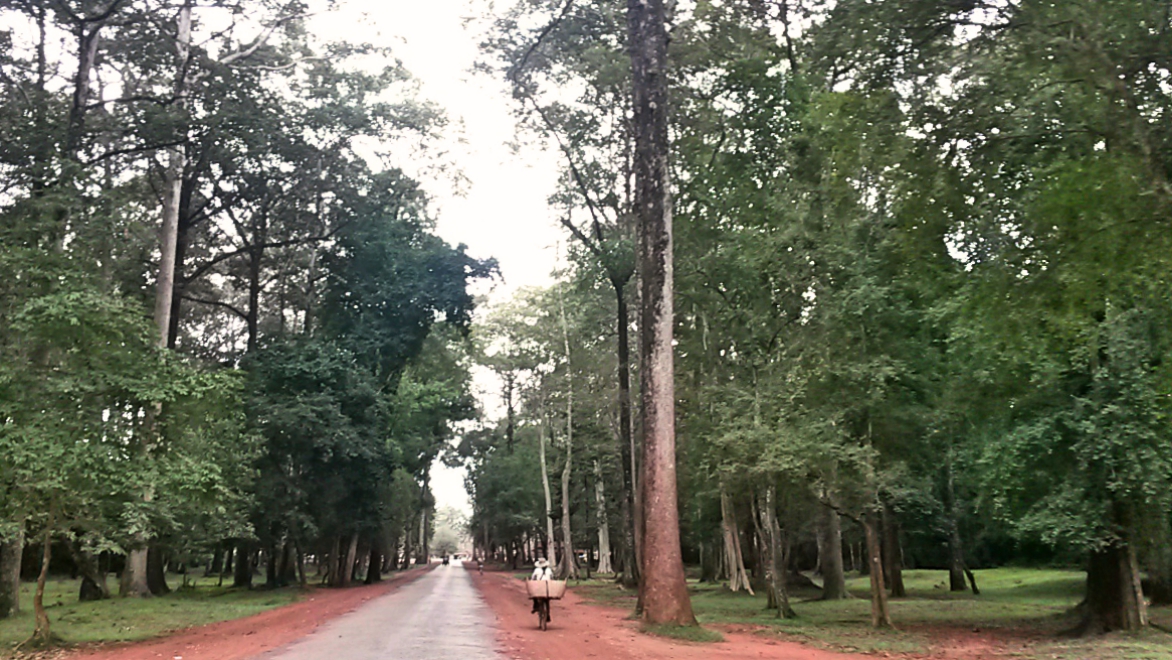
Cycling in Angkor is extremely doable: there are hardly any hills and most roads are reasonably well maintained. The area is quite vast which makes hiking not the best option, but considering you can buy 3-day or even week-passes a bicycle is the perfect fit. You can rent one at most hostels/hotels for about 1 or 2 USD a day and the ride from the center of Siem Reap to the entrance of the temple complex is only about 20-30 minutes.
The practicality of cycling Angkor Wat
Being inside the park, the mobility of your own wheels allows you to go anywhere you want and stay there as long as you want. But the best thing really is that all the while you are moving from temple to temple you will pass by rarely-visited smaller temples. Some of them are not even mapped but are larger and more beautiful than many well-known temples elsewhere in South-East Asia. Beyond Angkor Wat and Ta Phrom the crowds quickly get really thin.
Childish joy of exploration
Combine this with cycling between huge Jurassic trees in lush jungle and you will feel like a proper explorer. On an adventure out in the wilderness, looking for lost temples accompanied by nothing but the sound of birds chirping and probably a slight squeak from your bike every now and then. It is this childish joy of exploration, combined with the freedom of moving around on your own terms, while still learning about culture (bring a guidebook) that delivers that exhilarating ‘travelers-high’ that everybody craves for when out on the road, but only rarely truly experiences.
I can honestly say that by cycling Angkor, even though the sights themselves are one of the best that are out there, it is the feeling and experience that I remember best.
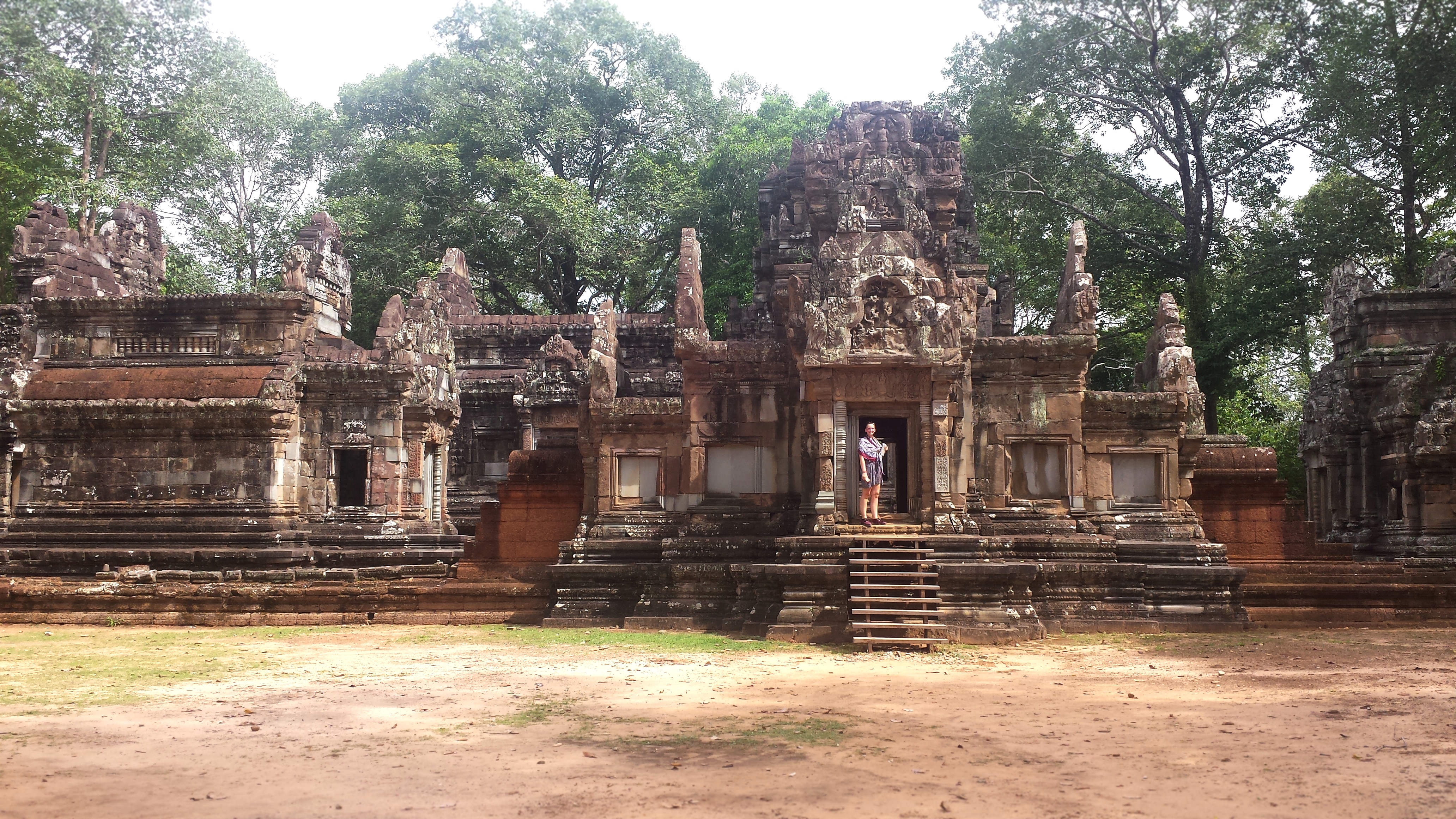
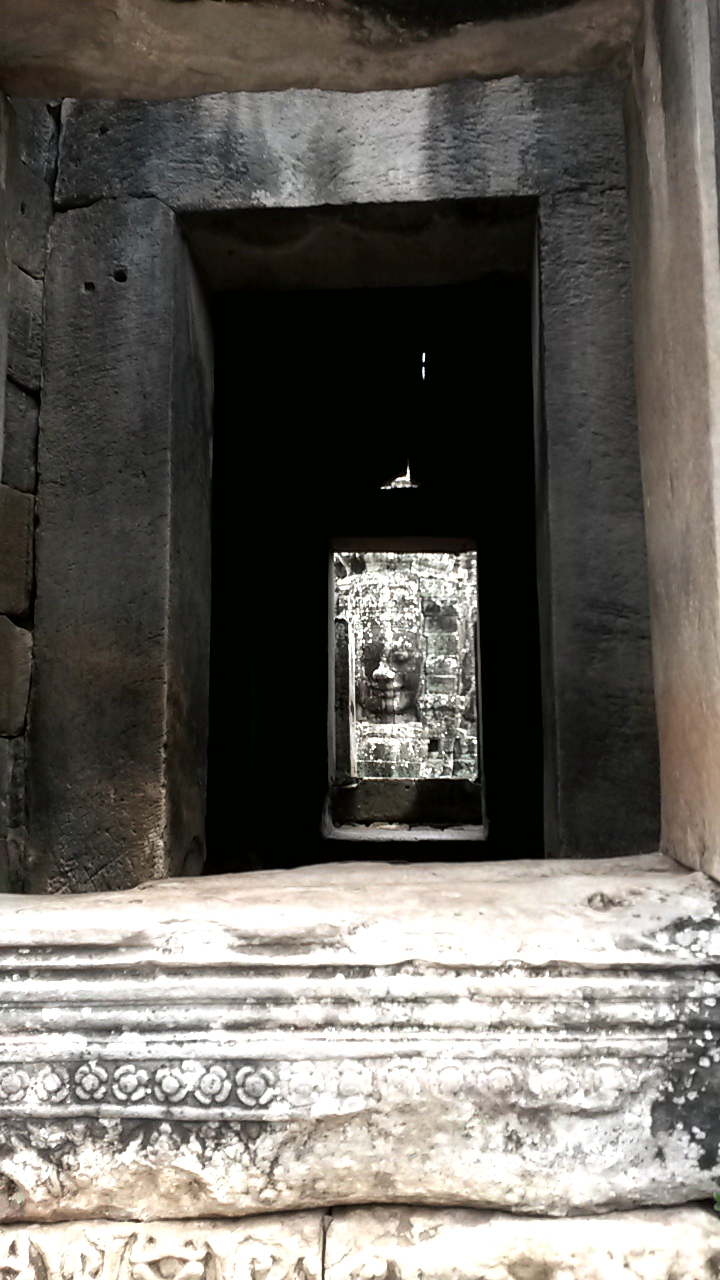
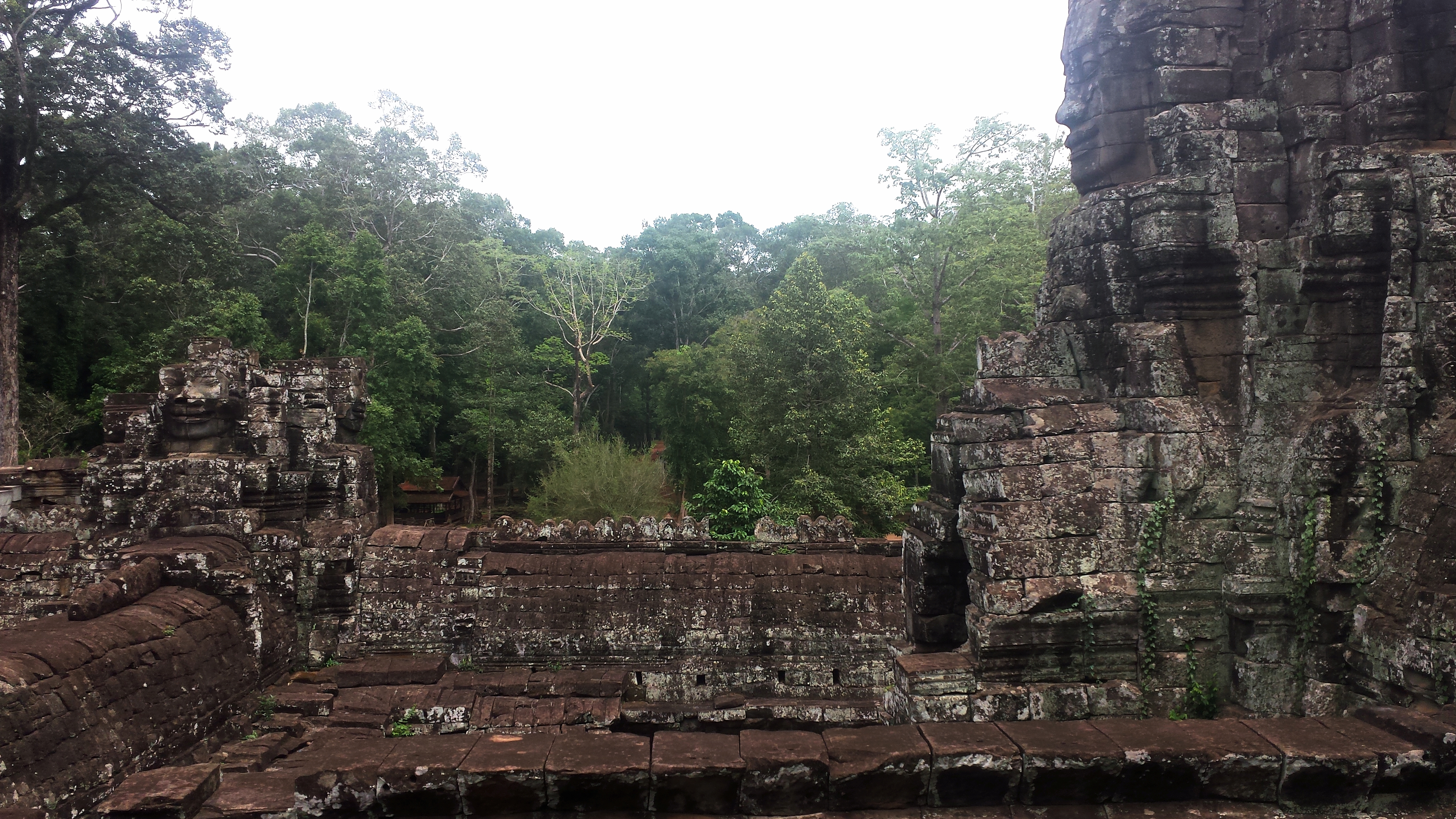
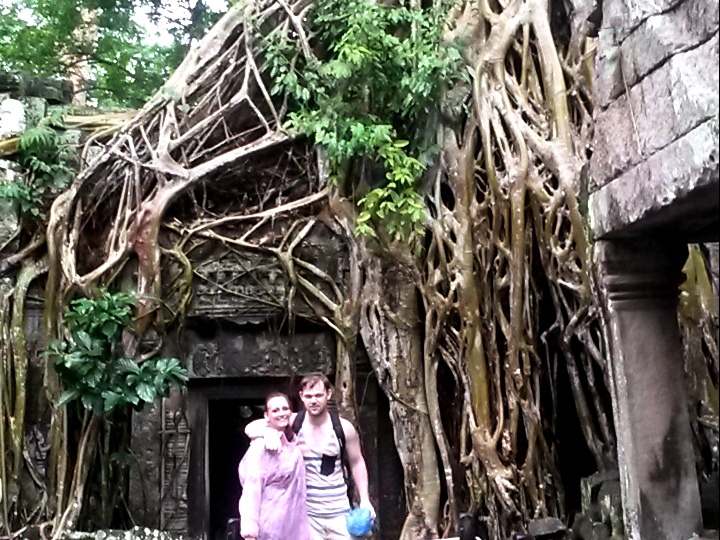
– What to bring when cycling Angkor Wat –
Just some common sense tips that I feel obliged to make.
- Bring plenty of water. Think 2x 1.5L a person. The combination of cycling Angkor Wat and jungle-heat can really bring you to the brink of dehydration. Water is sold around the main temples for quadrupled prices.
- Also bring some food. Around the bigger temples you will find some hawkers that sell fried rice and packs of cookies/crisps. Further out there is nothing.
- Do not go out cycling Angkor Wat solo unless you carry a repair-set to fix a flat tire.
- Bring sunscreen, bug-lotion, a poncho to fight the occasional tropical shower, a waterproof bag, a guide-book and download an offline map of the area on your mobile so you can GPS your way back to town if you get lost.
Pop these into your daypack
Waterproof Bag
A waterproof bag is a lifesaver when caught in the rain but also when kayaking, jungle-trekking or chasing waterfalls. If nothing else it gives you piece of mind when traveling with camera gear or other stuff that just can’t get wet. Get a 5L or 10L version so you can pack it within your daypack. I recommend this one from Mountain Splash. It’s durable and tough, transparent and it has got an easy handgrip.
Hand Sanitizer
Yes I view anti-bacterial hand sanitizer as essential. Not because I am germophobic but because this will save you from diarrhea and food poisoning. Most people that get sick from eating street food in South-east Asia don’t get sick from the shitty hygiene at the street food stall but because they didn’t probably wash their hands. Use hand sanitizer, stay a happy traveler. This set got handy Carabiners to latch it on you any pack.
DEET bugspray
Unfortunately with tropic temperatures come tropic insect. The only known active ingredient to effectively deter mosquitos is DEET. Unfortunately it’s not very healthy which is why I do not recommend using 95% DEET solutions. 40% works perfectly in my experience.
Lonely Planet
Because its just the best compact travel guide out there. I always take a lonely planet with me for its practical information and background on certain sights. It is a lifesaver for when you find yourself unexpectedly off the beaten path in search of accommodation for the night. For me this is still the best way to read up on a destinations in long haul bus rides. You don’t need internet or battery-life and you can keep it dry in your recently purchased waterproof bag!
Cycle light
Everything more is fine but really just a luxury, Cycling is best done as light as possible so think twice on bringing anything else. The main temples plus one or two extra will take you a full day. Divide your visit up into 2 or 3 morning/early-afternoon rides. Use the rest of each day for poolside relaxing.
So whether you are scrolling on your cellphone in a hostel somewhere or at home behind your laptop dreaming of your next trip. It is time to write down ‘cycling Angkor’ on your must-do-list. You will not regret it, I guarantee it.
